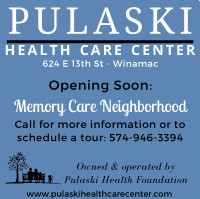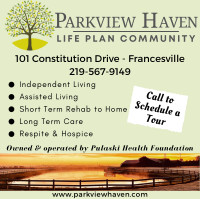State and local public health officials are working together on the investigation to contact those with known exposure to help prevent further spread of infection. The risk to the general public remains low.
Measles is caused by a highly contagious virus that spreads easily from person to person. It is an airborne disease, meaning it spreads through the air when an infected person breathes, coughs, sneezes, or talks. The virus can stay alive in the air and on surfaces for up to two hours. Because measles is so easily spread, a single case is considered an outbreak.
Two doses of MMR (measles, mumps, rubella) vaccine are 97% effective at preventing measles. Individuals born before 1957 are presumed to be immune. Consult with your healthcare provider if you are unsure of your vaccination status.
Children are routinely vaccinated for measles at 12-15 months, and again at 4-6 years of age before going to kindergarten, but children as young as 6 months old can receive the measles vaccine if they are at risk.
Measles begins with a fever, cough, runny nose and red eyes usually about 7 to 14 days after exposure to measles but can occur up to 21 days. The fever increases and can get as high as 105 degrees. Tiny white spots (Koplik spots) may appear inside the mouth two to three days after symptoms begin. Then two to four days after symptoms begin, a rash starts on the hairline and face. It spreads down the back and torso, and then extends to the arms and hands, as well as the legs and feet. After about five days, the rash fades the same order in which it appeared.
If you are experiencing symptoms of measles, stay home and call your healthcare provider right away before going to the doctor’s office.
Please visit the IDOH website or the CDC website for more information about measles.
Visit the Indiana Department of Health at www.health.in.gov for important health and safety information, or follow us on X at @StateHealthIN and on Facebook at www.facebook.com/StateHealthIN.
IDH COVID report
The Indiana Department of Health reported Tuesday (April 8) the number of emergency department visits for COVID-like illness for the period of March 26-April 1 dropped to 172 (down 21) from the previous weekly report.
CDC ReportU.S. Measles cases in 2025As of April 3, 2025, a total of 607 confirmed* measles cases were reported by 22 jurisdictions: Alaska, California, Colorado, Florida, Georgia, Kansas, Kentucky, Maryland, Michigan, Minnesota, New Jersey, New Mexico, New York City, New York State, Ohio, Oklahoma, Pennsylvania, Rhode Island, Tennessee, Texas, Vermont, and Washington. Find more real-time updates of measles cases reported by:
Find updated outbreak recommendations issued by state or local health departments:
There have been 6 outbreaks (defined as 3 or more related cases) reported in 2025, and 93% of confirmed cases (567 of 607) are outbreak-associated. For comparison, 16 outbreaks were reported during 2024 and 69% of cases (198 of 285) were outbreak-associated. *NOTE: CDC is aware of probable measles cases being reported by jurisdictions. However, the data on this page only includes confirmed case |
|||||
|
CDC report on level of (all) respiratory illness activity
What to know (as of April 4)
Activity Levels Update:
- The amount of acute respiratory illness causing people to seek health care remains at a low level.
- Nationally, emergency department visits for diagnosed influenza, COVID-19 and RSV are low.
- Nationally, influenza (9.7%), and RSV (4.1%) test positivity decreased. COVID-19 (3.7%) test positivity remained stable.
- Nationally, wastewater viral activity levels for influenza A and COVID-19 are low, and RSV is now very low.
- COVID-19 predictions for the next two weeks suggest that emergency department visits will decline from a low to very low level. Influenza predictions suggest that emergency department visits will remain at a low level.
Protect yourself and your community
Looking for guidance?
- Safeguard your health - Get the latest information from Vaccines.gov
- Order 4 free at-home COVID-19 tests today on COVIDTests.gov
- Explore resources and recommendations for older adults - Stay informed and protected
- Review tailored health recommendations for high-risk individuals
- Feeling ill? Take immediate steps to protect yourself and others – Start here
- Have symptoms? Consider wearing a mask
- Take action against germs – Practice good hygiene
- Got questions? Check out our FAQs
Recommended immunizations protect people and save lives
Last year (2023-24), CDC estimates:
Flu vaccination prevented:
- At least 7 million influenza illnesses
- 3.7 million influenza-associated medical visits
- 105,000 influenza-associated hospitalizations
- 3,500 influenza-associated deaths in the United States
COVID-19 vaccines:
- Reduced the risk of severe COVID-19 by about half.
RSV immunizations:
- Reduced the risk of RSV-associated hospitalization by 75% among adults ages 60 years and older.
- Were 90% effective against RSV-associated hospitalization in infants during their first RSV season.







